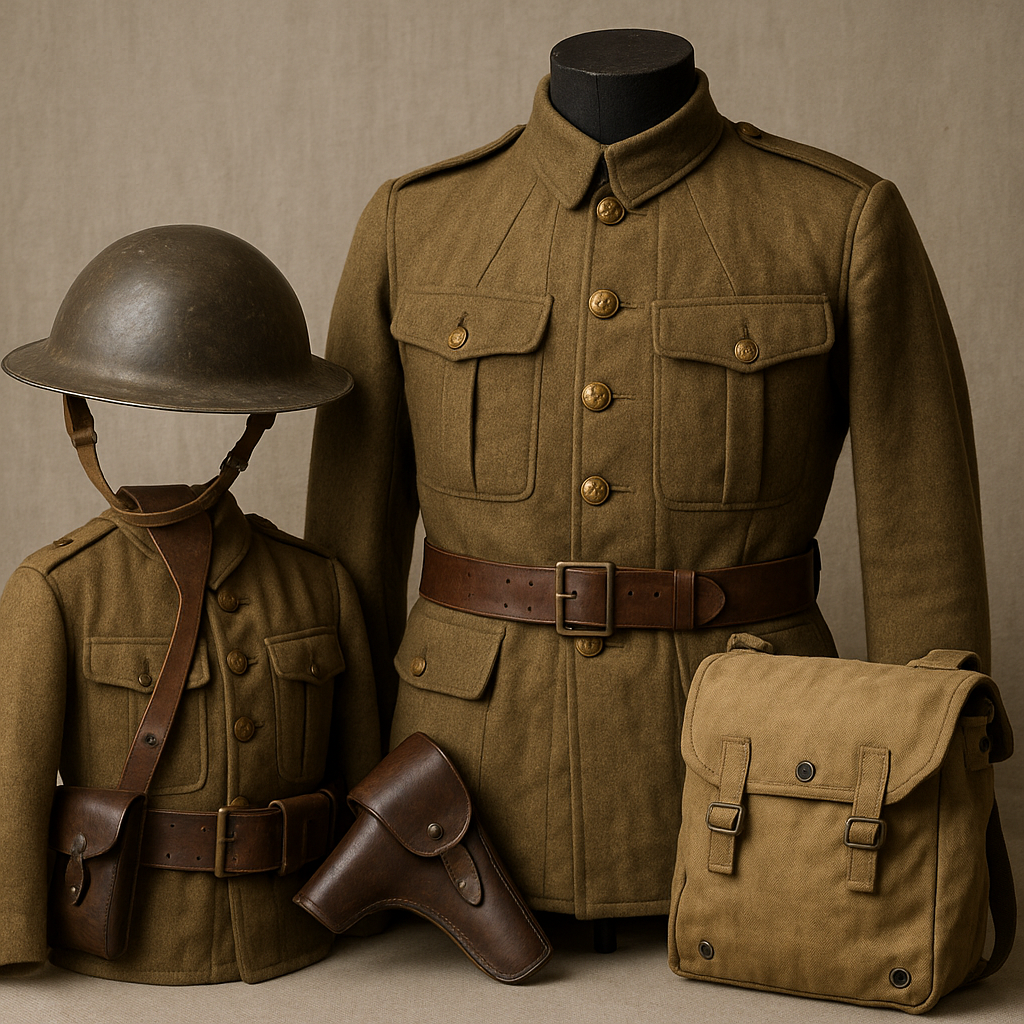
Old Military Uniforms: A Beginner’s Guide to WWI Uniform Accessories and Collecting War History
Published on Oct 01, 2025
Introduction: Why Old Military Uniforms Still Matter
Did you know that over 25 million military uniforms were produced during WWI alone? Many of these historic garments and accessories still exist today—circulating through collectors’ markets, museums, and even family attics.
For history enthusiasts and collectors, exploring old military uniforms is more than a hobby—it’s a way of preserving stories. Whether you’re drawn to WWI uniform accessories, rare WWI army surplus, or a WW2 French uniform, the world of collecting offers endless opportunities.
This guide will give you:
- Actionable steps to start or expand your collection
- Pitfalls to avoid when buying or preserving pieces
- Current trends in collecting old military uniforms
Let’s dive into the fascinating world of WWI and WWII attire.
The Basics of Old Military Uniforms
What Makes Old Military Uniforms Unique?
Old uniforms are more than fabric; they’re time capsules. Each stitch, badge, or belt tells a story about the soldier who wore it and the conflict they faced. Collectors focus on:
- Authenticity – Originality matters most. Reproductions have value but rarely match the real thing.
- Condition – Uniforms with intact buttons, patches, and insignia are prized.
- Historical Context – A Canadian soldier’s tunic from WWI means something different than a French officer’s jacket from WWII.
Popular Areas of Collecting
- WWI Uniform Accessories – Helmets, belts, mess kits, and trench caps.
- WW1 Army Surplus – Often easier to find and budget-friendly for beginners.
- Canadian Military Uniforms WW1 – Rare pieces like Ross rifle pouches or maple leaf badges.
- WW2 French Uniform – Recognised for its distinctive blue and khaki tones.
How to Start Collecting Old Military Uniforms
Step 1: Define Your Focus
Ask yourself: Do I want a general collection, or will I specialise in one army or war?
- WWI: Look for trench gear, officer caps, or greatcoats.
- WWII: Explore gear from a WW2 shop online or visit local auctions.
Step 2: Learn the Market
- Visit war museums for inspiration.
- Join online forums dedicated to WWI and WWII history.
- Follow specialist dealers in old military uniforms.
Step 3: Buy Smart
- Start small with accessories like belts, pouches, or insignia.
- Use reputable WW2 shops or antique fairs.
- Look for provenance—any paperwork linking the item to a soldier adds value.
Common Pitfalls to Avoid When Buying Old Military Uniforms
- Fakes and Reproductions
- Reproduction helmets and jackets flood the market.
- Actionable Tip: Always check stitching patterns and material age. Real WWI wool has a rougher texture compared to modern reproductions.
- Overpaying for Surplus
- Not all WW1 army surplus is rare. Common items like canteens may be priced higher than they should be.
- Actionable Tip: Compare prices across multiple sellers.
- Ignoring Condition
- A moth-eaten greatcoat may look appealing, but it won’t hold value.
- Actionable Tip: Store in acid-free boxes to preserve wool and cotton.
- Forgetting Research
- Buying a random tunic without knowing its history is a missed opportunity.
- Actionable Tip: Read regimental history books or consult with experts.
Current Trends in Collecting Old Military Uniforms
Rising Interest in WWI Uniform Accessories
With the 100th anniversary commemorations of WWI, more collectors are seeking Canadian military uniforms, WWI trench helmets, and officer caps.
WW2 French Uniforms in Demand
Collectors are increasingly drawn to WW2 French uniforms because they represent both early-war resistance and post-liberation France.
Digital Marketplaces & Online WW2 Shops
- Online auctions and niche WW2 shops are making rare uniforms more accessible.
- Virtual authenticity checks (using high-resolution photos) are becoming common.
Younger Collectors Entering the Scene
Millennials and Gen Z history buffs are drawn to old military uniforms for reenactments and historical cosplay. This keeps the market vibrant.
Preservation Tips for WWI Uniform Accessories
- Climate Control: Store at a stable temperature and humidity.
- Avoid Plastic Bags: Use breathable cotton covers instead.
- Rotate Displays: Don’t leave uniforms under direct sunlight.
- Document Provenance: Keep photos and notes on where each piece came from.
Real-Life Example: The Value of Canadian Military Uniforms WW1
A collector in Ontario recently purchased a full Canadian military WW1 tunic with insignia and Ross rifle pouch for under $500. After verifying authenticity, its value tripled in just two years. This shows the potential of combining passion with smart buying.
Actionable Tips for Beginners
- Start with Accessories: Helmets, belts, or patches are affordable entry points.
- Visit a WW2 Shop in Person: Handling an item helps you spot reproductions.
- Network: Collectors often exchange or trade surplus items.
- Specialise Early: Whether WW1 army surplus or WW2 French uniforms, a focus gives your collection depth.
Conclusion: Why Old Military Uniforms Are Worth Collecting
Collecting old military uniforms is not just about owning relics. It’s about preserving history, honouring sacrifice, and connecting with stories from WWI and WWII. From WWI uniform accessories to rare finds like a WW2 French uniform, every piece adds value to your understanding of the past.
